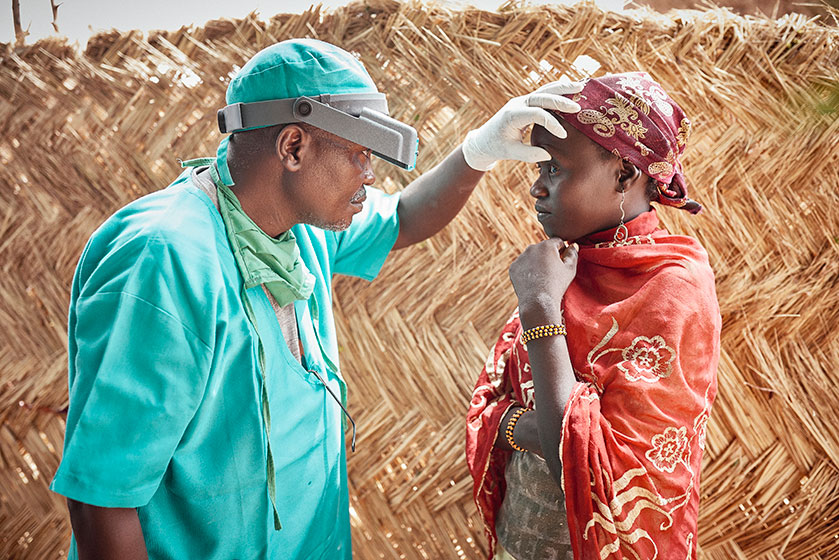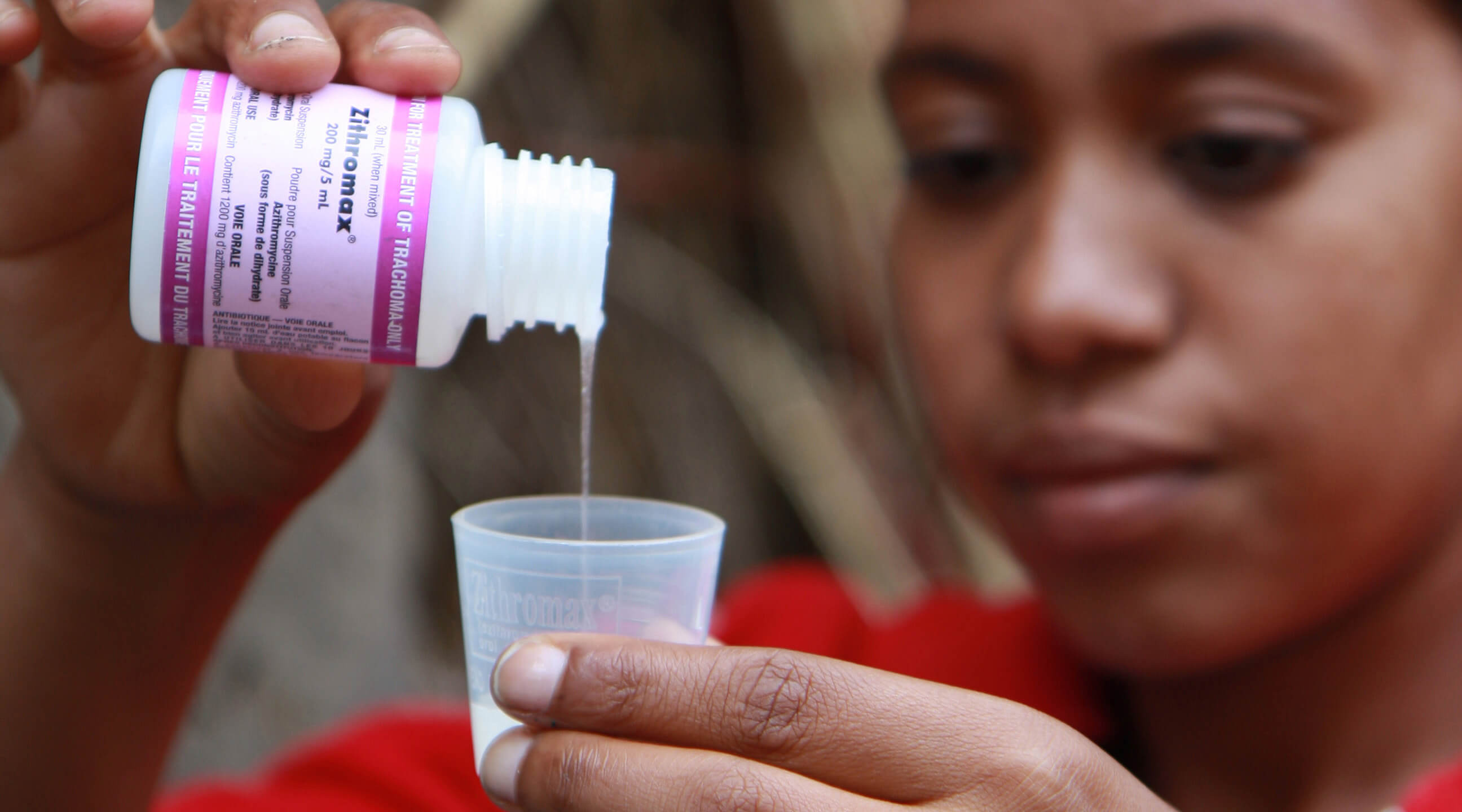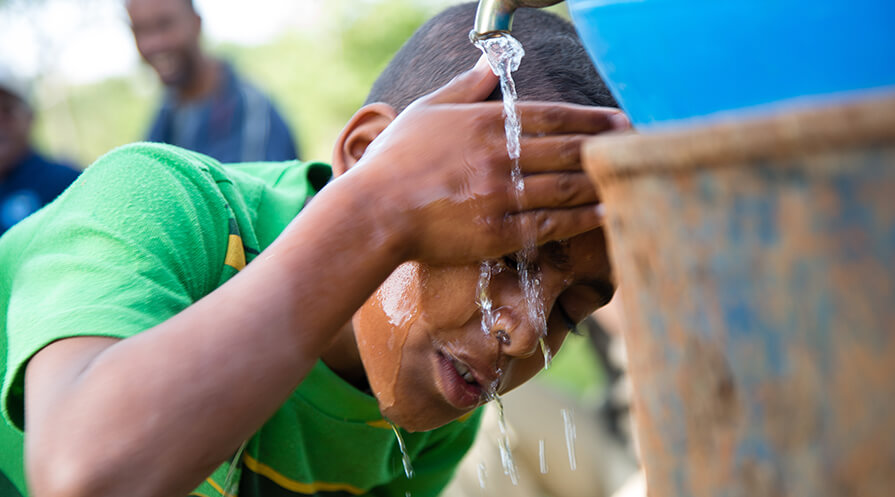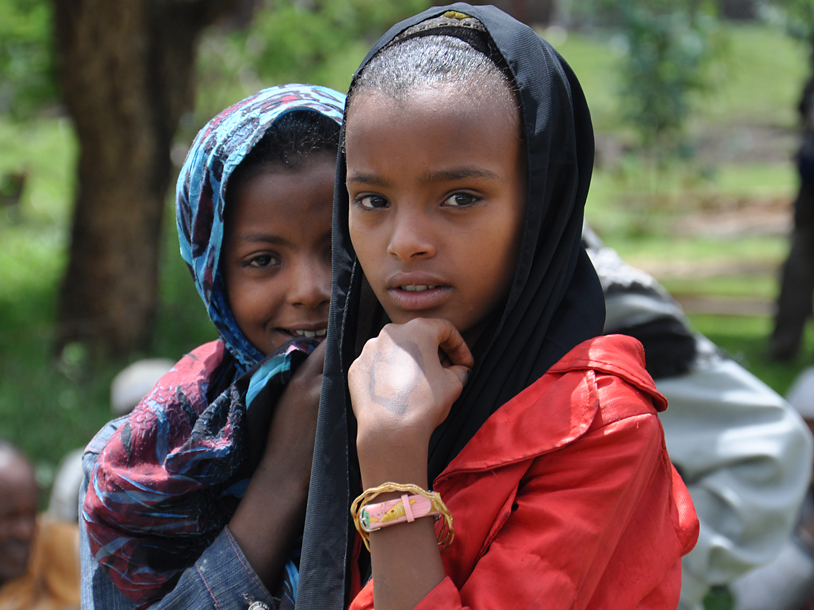The Trachoma Control Program works with ministries of health in four African countries to eliminate blinding trachoma, the world's leading cause of preventable blindness.
What is Trachoma?
Trachoma is a bacterial eye infection found in poor, isolated communities lacking basic hygiene, clean water, and adequate sanitation.
Trachoma is easily spread from person to person through hands, clothes, and eye-seeking flies. Repeated infection over time leads to scarring and inward turning of the eyelid, causing the eyelashes to scratch the cornea — a very painful condition called trachomatous trichiasis — which eventually causes blindness if left untreated.

Dr. Abdou Ousseini, a public health physician in Niger’s Zinder region, examines a patient's eyelids for trichiasis, a turning of the eyelashes that can permanently scar a trachoma sufferer’s corneas. (Photo: The Carter Center/S. Phelps)
How Widespread is the Disease?
Trachoma can be found in 40 countries, mostly in Africa and the Middle East, and a few in the Americas and Asia.
Globally, 115.7 million people are at risk for trachoma, which represents a 7% reduction from 125 million in 2022. However, 1.5 million are still at immediate risk for blindness from trachomatous trichiasis, also known as TT.
The Carter Center works to control and prevent blinding trachoma in Ethiopia, Niger, South Sudan, and Sudan. Ethiopia has the highest known burden of active trachoma infection in the world. The Carter Center supports Ethiopia’s (and thus the world’s) most affected region, Amhara.

A health worker in Ethiopia pours a dose of the antibiotic syrup of Zithromax® (azithromycin, donated by Pfizer Inc.), which is used to treat the eye disease trachoma. (Photo: The Carter Center)
Our Strategy
The Carter Center's Trachoma Control Program was established in 1998. As a global leader in the fight against trachoma, the Center and partners implement the World Health Organization-endorsed SAFE strategy for trachoma control. SAFE is a multipronged approach to trachoma prevention that comprises Surgery, Antibiotics, Facial cleanliness, and Environmental improvement.

In the Amhara region of Ethiopia, a boy washes his face to prevent trachoma infection. (Photo: The Carter Center)
Results and Impact
- The Carter Center trains and equips local health workers to surgically correct eyelids deformed by trachomatous trichiasis (TT), the scarring that results from multiple trachoma infections. In 2022, the Center supported 33,427 corrective eyelid surgeries. From 1999 through 2022, the Center has assisted national programs in providing 902,363 TT surgeries in Ethiopia, Mali, Niger, Nigeria, South Sudan, and Sudan.
- Since 1999, The Carter Center has assisted in the distribution of more than 229 million doses of Zithromax® (donated by Pfizer Inc.), an effective trachoma-fighting antibiotic. In 2022, the Center assisted in the distribution of 10,112,283 doses.
- The Carter Center has ongoing health education efforts in over 3,800 villages each year across Ethiopia, Niger, South Sudan, and Sudan. For nearly 25 years, The Carter Center has assisted in the training and retraining of more than 425,000 persons, including teachers and principals, in conducting health education against trachoma.
- The Carter Center continues to support the construction of household latrines. Since 2002, more than 3.6 million household latrines have been built to help reduce breeding sites for flies, a principal source of infection transmission.
- On April 27, 2023, the WHO validated Mali as having met all criteria for the elimination of trachoma as a public health problem. Mali is the 17th country to achieve this status and has done so despite insecurity and significant disease prevalence at baseline. The Carter Center began its partnership with the Mali National Program in 1998.
- Ghana in 2018 became the first sub-Saharan African country to be validated by the WHO for eliminating trachoma as a public health problem. Ghana reached its goal by 2010, but the WHO had not yet developed a process or criteria to evaluate the country’s achievement. The WHO created a process in 2016 to allow Ghana and other countries to be validated as having met the targets. The Center's Trachoma Control Program assisted Ghana’s Ministry of Health from 1999 through 2011.
- Two states in Nigeria, Plateau and Nasarawa, eliminated trachoma as a public health problem in 2018. The Carter Center’s Trachoma Control Program worked with both states’ health ministries from 2000 through 2015.
 Meet people whose lives have been changed by the Carter Center's Trachoma Control Program.
Meet people whose lives have been changed by the Carter Center's Trachoma Control Program.